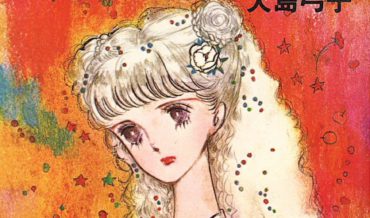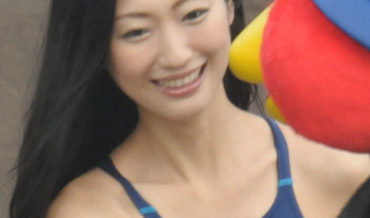Assistant Professor, Department of Political Science and Economics, Meiji University
In everyday speech, abjection is usually taken to mean degradation, the lowest of the low, the most extreme version of a (negative) condition. We speak of abject poverty as complete and total poverty or abject terror to mean that we are completely consumed by terror. Within the context of psychoanalytic and poststructuralist theory, however, abjection refers to a very specific kind of grotesqueness—the abject is that which we instinctively push away. It is blood, feces, urine, vomit, and other bodily effluvia that are very much a part of us but also that which we instinctively recoil from. Not surprisingly, discussions of abjection and the abject body in critical theory frequently happen in the context of horror films, where abject bodies and abject beings act as a device to make us question our own humanity and subjectivity.
Some of the earliest writing on abjection comes from Georges Bataille, who described a sociopolitical form of abjection in his essay “Abjection and Miserable Forms,” first drafted in 1934 and published posthumously in 1970 (Bataille [1970] 1999; Arya and Chare 2014, 2). Though Bataille’s theorization of abjection was not specifically related to the human body, Rina Arya and Nicholas Chare argue that “if we consider abjection as a concept within a larger theory of the sacred, particularly in relation to Bataille’s work on desire and eroticism (see Wirth, 1999) then we can make the case that it was integral because it contributed to his aesthetic and philosophical view of desublimation” (2014, 2). Undoubtedly, though, the theorist most strongly associated with the concept of abjection is Julia Kristeva, whose Powers of Horror: An Essay on Abjection ([1980] 1982) drew on Lacanian and Freudian theory to define abjection in the context of the symbolic order.
It is thus not lack of cleanliness or health that causes abjection but what disturbs identity, system, order. What does not respect borders, positions, rules. The in-between, the ambiguous, the composite.
—Julia Kristeva
Kristeva defines the abject as that which we naturally shun: corpses, bodily effluvia, rotten things, vomit, blood, urine, and feces. The abject “(shows) me what I permanently thrust aside in order to live” (Kristeva [1980] 1982, 3). In the presence of the abject, she writes, “I am at the border of my condition as a living being. My body extricates itself, as being alive, from that border” (ibid.). Abjection is thus a means of survival. Through our instinctive disgust at the sight of rotting flesh or bodily waste, we shun that which could make us ill or kill us. But in spitting out or vomiting that which would make us ill, we also acknowledge that the abject is not separate from us: “I expel myself, I spit myself out, I abject myself within the same motion through which ‘I’ claim to establish myself” (ibid.). The instinct to shun the abject coincides with the early Freudian psychosexual stages of development, in which the child gradually learns to differentiate between self and other, subject and object (Freud [1925] 1989).
Indeed, an important aspect of abjection is that it is not entirely other—it is of us, it comes from us, and in some cases our fear is rooted in its threat to consume us. Kristeva argues that our first experience of abjection comes in the moment of birth, when we are forcibly separated from our mother’s womb and forced to become distinct from our mother’s body. In that moment, that which had been a space of nurturing and comfort becomes abject, and we carry that paradox with us for the rest of our lives, constantly feeling simultaneously drawn to and repulsed by abjection. “The abject confronts us [. . .] with our earliest attempts to release the hold of maternal entity even before existing outside of her [. . .] It is a violent, clumsy breaking away, with the constant risk of falling back under the sway of a power as securing as it is stifling” (Kristeva [1980] 1982, 13). Before we are born, the womb is a safe and comforting place, but after birth the mother’s womb is figured as grotesque, and the idea of being swallowed/consumed by it is horrifying, even as we remember the womb as a space of security and comfort. The abject threatens because of its dual nature: We shun it, but it is never completely separate from us, and thus we live with the constant possibility that it will cross our boundaries or consume us however hard we try to keep it at bay.
Barbara Creed draws heavily on Kristeva’s concept of abjection in The Monstrous-Feminine: Film, Feminism, Psychoanalysis (1993), which looks specifically at abject imagery and themes in horror films, with a focus on the abjection of female bodies. Creed argues that horror films and abjection are a natural match, not only because the horror film “abounds in images of abjection” (1993, 10), but also because of the horror film’s tendency to frighten audiences by confronting them (in the safe space of movie viewing) with that which they would normally shun (ibid., 10–11). Horror films’ focus on corpses, gore, and unstable bodies also “deliberately points to the fragility of the symbolic order” (ibid., 11) by presenting a world in which borders between clean/unclean, inside/outside, and self/other are constantly being crossed. Images of the mother and the womb also figure strongly in horror films, often as an abject force that threatens to devour or consume, the so-called “monstrous-feminine.” In her analysis of the film Alien (1979), Creed argues that the terror the film inspires comes from the way it plays with images of impregnation, birth, and the idea of the “archaic mother” as a consuming, devouring force. Alien terrifies its audience with images of, among other things, a malevolent and all-consuming womb, seen in the alien ship that the crew enters (through a vagina-like doorway), the gaping, pulsating maw of the alien egg that one crew member looks into for too long, and that crew member’s subsequent impregnation by a parasitic organism, which results in a terrifying recreation of the “primal birth scene” in which the parasitic organism bursts out of the crew member’s chest and kills him. The fear that permeates the movie is of violent monsters that transgress a symbolic boundary. In its imagination of the mother as “both source of life and abyss” (ibid., 26), Creed argues, the film is providing a clear sense of right and wrong: The “right” mother is the nurturer and giver of life, while the “wrong” mother is the devouring, all-consuming force.
In her analysis of representations of abjection in the visual arts, film, and literature, Rina Arya also notes the importance of abjection as a key component of the horror film, arguing that our fascination with horror “reflects a desire to engage with the abject [. . .] Abjection gives voice to feelings that are often repressed, and confrontation may engender a sense of release [. . .] The experience of abjection psychically takes us back to the blurred boundary between the mother and infant in its struggle for the autonomy of the ego, where attraction notwithstanding, the mother is rejected as an object of desire” (2014, 29). Such films allow us to (re)experience a primal fear and understand a fundamental feature of being human: our constant battle to keep the abject separate while also acknowledging that it is never truly far away. “Disgust underpins human life and abjection explains our fear and fascination with it. We want to keep the abject literally and metaphorically at bay in our lives [. . .] But resistance [. . .] is matched by an insistence by the abject to break into our lives in all quarters” (ibid., 189). Being human is defined in part by this “blurred boundary” and by a constant fear that the abject will encroach on our carefully ordered lives.
Japanese media is no stranger to images of abjection, and it is not surprising that they appear most frequently in horror films. Interestingly, horror films made during the so-called “J-horror boom” period of the late 1990s and early 2000s were notable more for their lack of focus on gore and mangled bodies. This was a period in which US horror cinema was dominated by images of abjection in “torture porn” films that featured graphic depictions of rape, torture, and dismemberment. Many Japanese horror films, in contrast, focused more on suspense, creepy atmospheres, and a growing sense of dread (McRoy 2005). There were exceptions to this style, notably films like Bizhitā kyū (Visitor Q; 2001), Ōdishon (Audition; 1999), and Koroshiya Ichi (Ichi the Killer; 2001), all by the director Takashi Miike, which became famous for bodily violence that bordered on the comical. Even in the more “atmospheric” Japanese horror films, however, images of abjection did occasionally appear, often in the film’s climactic final scenes. Four films—Shibuya Kaidan (The Locker; 2004), Ringu (The Ring; 1998), Honogurai mizu no soko kara (Dark Water; 2002), and Chakushin ari (One Missed Call; 2003)—all feature a remarkably similar final scene that draws on the primal sense of repulsion and attraction that abjection can inspire. The scene is of a mother embracing the abject body of a monstrous, ghostly child (and in the case of One Missed Call, a child embracing the abject body of a monstrous, ghostly mother).[1] One of these monstrous children, Mitsuko of Dark Water, perhaps best embodies the contradictions and enduring pull of the abject body.
Along with The Ring, Dark Water is one of the most recognizable products of the J-horror boom period. Both films were directed by Hideo Nakata, and both were remade in the United States. The Ring has spawned multiple sequels and prequels in Japan, the United States, China, and Korea, and both feature atmospheric stories of mysterious happenings that center around a vengeful female spirit. Dark Water is the story of single mother Yoshimi and her daughter Ikuko, who are searching for a new place to live while Yoshimi also struggles to find a job and maintain custody of her daughter. Their new apartment has strange problems with the water supply, and mother and daughter repeatedly catch glimpses of a small girl, even though the building manager says there are no other children living in the building. We eventually find out that a young girl, Mitsuko, drowned in the apartment water tank and now seems desperate to kill Ikuko so that she can claim Yoshimi as her mother.
In the film’s climactic scene, Yoshimi believes she has rescued her own daughter from drowning in a bathtub and is cradling her unconscious body in an open elevator. Looking down the hallway, though, she sees Ikuko emerging from their apartment and looks down in horror to see that the body she is cradling in her arms is actually the rotting, corpse-like figure of Mitsuko, who cries out “Mama!” and wraps her arms around Yoshimi. Yoshimi desperately tries to push Mitsuko away as Mitsuko tries to strangle her, but ultimately Yoshimi realizes that the only way to save her own daughter from Mitsuko’s wrath is to surrender. She relents and tells Mitsuko “Yes, I’m your mother,” embraces her, and the two of them vanish into a kind of watery netherworld.
Many Japanese horror films of the late 1990s and early 2000s focused on motherhood and birth, presenting a conservative ideal in which loving mothers could seemingly solve any problem, but also punishing mothers who appeared to be less devoted. The Ring tells the story of Sadako, a ghostly girl with long black hair who transmits her rage through a cursed video cassette. Sadako is the child of Shizuko, a spiritual medium, and both mother and child are seen as monstrous because of their supernatural abilities. Sadako is killed by being thrown into the womb-like space of a deep well and wreaks her vengeance through a kind of reproduction: forcing others to endlessly make copies of her rage through a video cassette. Both Sadako and her mother are “wrong” versions of motherhood and femininity (in the novel version of the story, Sadako is described as intersex). Ruth Goldberg argues that the blame for Sadako’s monstrousness is subtly aimed at Sadako’s mother, who committed suicide after she was labeled a fraud: “Her neglect, avoidance, and sublimated anger manifest in her children, turning them into monsters through the mechanism of projection” (2004, 377). By being the “wrong” kind of mother, Shizuko makes her daughter abject. If only their mothers had been more loving, or less concerned with their own lives—many of these Japanese horror films seem to say—their children would not have become monstrous.
In the case of Dark Water, the film’s conflicted portrayal of Yoshimi (who is depicted sympathetically but must ultimately die in order to save her child) is mixed with images of monstrous wombs. The film opens with credits appearing over murky, stagnant water (the Japanese title of the movie translates to “from the depths of the murky black water”), the apartment is damp and occasionally flooded with water, one of the characters drowned in a large, cylindrical water tank, the child Ikuko is at one point dragged into a bathtub full of dark, bubbling water, and after her mother has vanished, Ikuko is engulfed in a wave of murky water that rushes forth from the apartment elevator. As in Alien, these womb-spaces are figured as abject: They are unclean and other, and they have the potential to devour and consume. Yoshimi is desperate to save herself and her daughter from the monstrous womb and the vengeful child contained within it, but ultimately she must surrender to abjection’s pull and allow herself to be consumed in order to save her daughter.
In the image of Mitsuko, we see the paradox inherent in abjection: Mitsuko is a child, vulnerable, in need of protection, and familiar, and Yoshimi is thus naturally drawn to her. At the same time, Mitsuko’s body is rotten and corpse-like, something that Yoshimi (and anyone else) would naturally shun. When Yoshimi resists and repeatedly tells Mitsuko that she’s not her mother, Mitsuko tries to strangle her (which will effectively consume Yoshimi by pulling her into death). Eventually, in order to save her own daughter, Yoshimi gives in and embraces Mitsuko, essentially agreeing to be consumed by her. When Ikuko later stands in front of the elevator’s closed doors crying out for her mother, all that remains is a rush of water that engulfs Ikuko, leaving her wet and crying out for her mother on the floor, in yet another image reminiscent of birth. Both Yoshimi and Mitsuko have, in a sense, returned to the womb, swallowed by abjection.
In Dark Water and many other Japanese horror films, then, abjection is often represented through conflicted feelings about birth and motherhood. The monstrous child/womb becomes a space “where meaning collapses” (Kristeva [1980] 1982, 9), something “rejected from which one does not part,” which “beckons to us and ends up engulfing us” (ibid., 4). Children are seen as abject because of their grotesque, boundary-defying bodies, but also because of their connection to neglectful mothers. In their abject state, they are shunned, but other characters, particularly female/mother characters, cannot help but be drawn to them, often to the point of being consumed by their monstrous presence.
Notes
- This image appeared yet again in Takashi Shimizu’s 2017 film Kodomo tsukai (Innocent Curse), which ends with a female character embracing a murderous doll-child after its threat has been neutralized. ↑
References
Arya, Rina. 2014. Abjection and Representation: An Exploration of Abjection in the Visual Arts, Film, and Literature. New York: Palgrave Macmillan.
Arya, Rina, and Nicholas Chare. 2014. “Introduction: Approaching Abjection.” Performance Research: A Journal of the Performing Arts 19, no. 1: 1–13.
Bataille, Georges. (1970) 1999. “Abjection and Familiar Forms.” Translated by Yvonne Shafir. In More & Less, edited by Sylvère Lotringer, 8–14. Pasadena: MIT Press.
Creed, Barbara. 1993. The Monstrous-Feminine: Film, Feminism, Psychoanalysis. London: Routledge.
Freud, Sigmund. (1925) 1989. “Three Essays on the Theory of Sexuality” [excerpt]. In The Freud Reader, edited by Peter Gay, 239–92. New York: W.W. Norton and Company.
Goldberg, Ruth. 2004. “Demons in the Family: Tracking the Japanese ‘Uncanny Mother Film’ from A Page of Madness to Ringu.” In Planks of Reason: Essays on the Horror Film, edited by Christopher Sharrett and Barry Keith Grant, 370–386. Rev. ed. Oxford: Scarecrow Press.
Horie, Kei, dir. 2004. Shibuya Kaidan (The Locker). DVD. Tokyo: Geneon Entertainment.
Kristeva, Julia. (1980) 1982. Powers of Horror: An Essay on Abjection. Translated by Leon S. Roudiez. New York: Columbia University Press.
McRoy, Jay. 2005. Japanese Horror Cinema. Honolulu: University of Hawai‘i Press.
Miike, Takashi, dir. 2003. Chakushin ari [One Missed Call]. DVD. Directed by Takashi Miike. Tokyo: Kadokawa Daiei Eiga.
Nakata, Hideo, dir. 1998. Ringu [The Ring]. DVD. Tokyo: Toho.
Nakata, Hideo, dir. 2002. Honogurai mizu no soko kara [Dark Water]. DVD. Tokyo: Kadokawa.
Shimizu Takashi. 2017. Kodomo tsukai. Tokyo: Shochiku.



